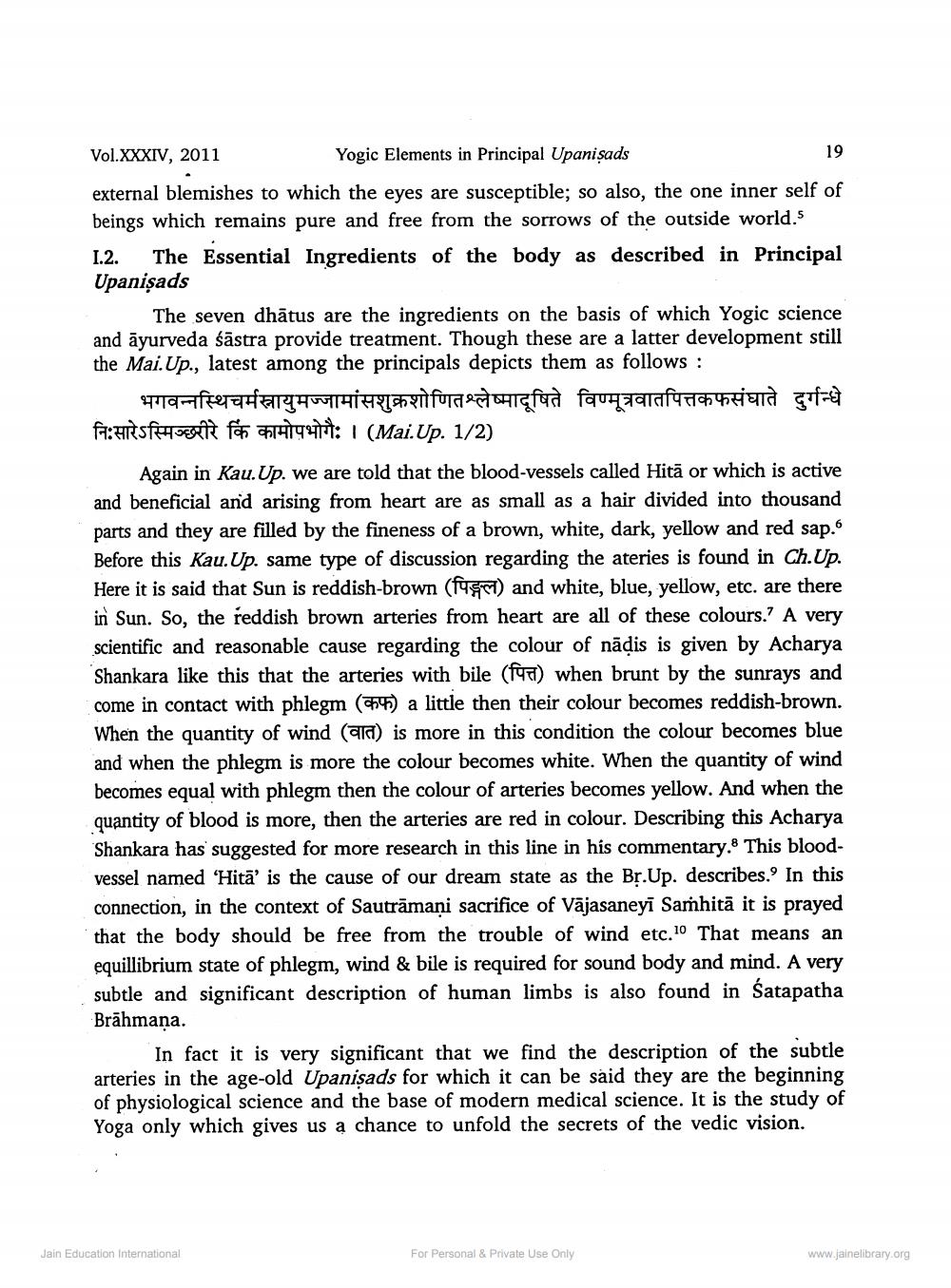________________
Vol. XXXIV, 2011 Yogic Elements in Principal Upani şads
19 external blemishes to which the eyes are susceptible; so also, the one inner self of beings which remains pure and free from the sorrows of the outside world." 1.2. The Essential Ingredients of the body as described in Principal Upanişads
The seven dhātus are the ingredients on the basis of which Yogic science and āyurveda śāstra provide treatment. Though these are a latter development still the Mai.Up., latest among the principals depicts them as follows:
भगवन्नस्थिचर्मस्नायुमज्जामांसशुक्रशोणितश्लेष्मादूषिते विण्मूत्रवातपित्तकफसंघाते दुर्गन्धे fa:Aristott få T: (Mai. Up. 1/2)
Again in Kau.Up. we are told that the blood vessels called Hitā or which is active and beneficial and arising from heart are as small as a hair divided into thousand parts and they are filled by the fineness of a brown, white, dark, yellow and red sap. Before this Kau.Up. same type of discussion regarding the ateries is found in Ch.Up. Here it is said that Sun is reddish brown (fast) and white, blue, yellow, etc. are there in Sun. So, the reddish brown arteries from heart are all of these colours.? A very scientific and reasonable cause regarding the colour of nāļis is given by Acharya Shankara like this that the arteries with bile (fur) when brunt by the sunrays a come in contact with phlegm (274) a little then their colour becomes reddish-brown. When the quantity of wind (ala) is more in this condition the colour becomes blue and when the phlegm is more the colour becomes white. When the quantity of wind becomes equal with phlegm then the colour of arteries becomes yellow. And when the quantity of blood is more, then the arteries are red in colour. Describing this Acharya Shankara has suggested for more research in this line in his commentary. This bloodvessel named 'Hitā' is the cause of our dream state as the Br.Up. describes. In this connection, in the context of Sautrāmani sacrifice of Vājasaneyi Samhitā it is prayed that the body should be free from the trouble of wind etc. 10 That means an equillibrium state of phlegm, wind & bile is required for sound body and mind. A very subtle and significant description of human limbs is also found in satapatha Brāhmaṇa.
In fact it is very significant that we find the description of the subtle arteries in the age-old Upanişads for which it can be said they are the beginning of physiological science and the base of modern medical science. It is the study of Yoga only which gives us a chance to unfold the secrets of the vedic vision.
Jain Education International
For Personal & Private Use Only
www.jainelibrary.org




